Thalapoli, Revathy Vilakk and Aswathy Kavu Theendal associated with Kodungallur Bharani festival in Sree Kurumba Bhagavati Temple
Bharani festival at the Kodungallur Bhagawati temple is one of the major festivals of Kerala, conducted in Kumbham month. The festival usually starts with a ritual called ‘Kozhikkallu moodal’, and ‘Aswathy Kavu Theendal’ is the major event associated with the annual celebrations. During this ritual, hundreds of Vellichapads in red dress, possessed with goddess carry swords in their hands and wave their sickle-shaped swords in the air and reach the temple premises. They use foul language and abusive words which are believed to please the goddess, also known as ‘Bharani Pattu’ and a purification ceremony is conducted the following day. ‘Thalapoli’ processions conducted on Makara Sankranthi is yet another popular celebrations of Kodungallur temple.
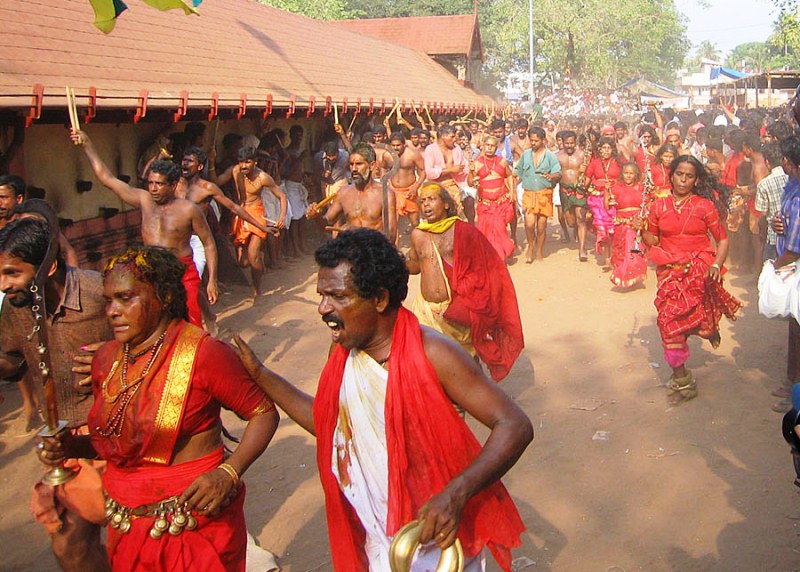
During the famous Kavutheendal ceremony, the whole temple premises turn to blood red colour with thousands of Komarans conquering it completely.
Revathy lamps lighten as a part of the eve
The lamps are lighted on the Revathy star day of Kumbham month in the evening. Revathy day is the most significant one in Kali- Darika war, the day which Bhadrakali earned victory on Darika. To celebrate the eve, Revathy lamps (Revathy Vilakk) will be lighted in Sree Kurumba Bhagavati Temple in the evening, exactly the same time when goddess liked the demon. Ghee lamps will be lighted in the main stone lamp placed before the time and also in Chuttambalam. It’s believed that battle reached the climax point on Revathy evening, and after taking the head of Darika, Kali reached Kodungallur, and Revathy Vilakk is to remember this event.
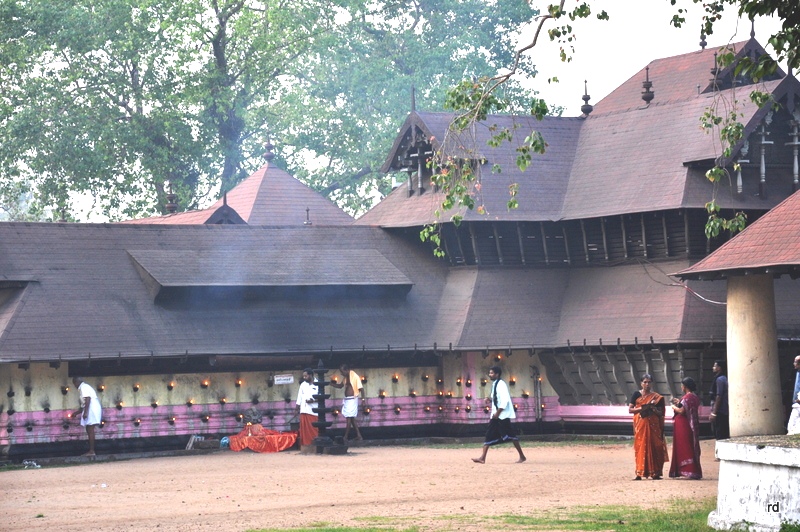
The whole temple premises will be lighted with oil/ghee lamps and devotees chant mantra, ‘Amme Saranam Devi Saranam’. In the late night, more than 10,000 Komarams conquer the whole place with their fierce dance steps and shoutings. They camp at Avakasa Thara and return only after Aswathy Kavu Theendal ceremony conducted the next day. Trichandana Charth Pooja is also conducted on Aswathy day.
Permission granted by Valiya Thampuram
The permission Trichandana Charth Pooja and Aswathy Kavu Theendal are given by Rama Varma Raja. He reaches Balikkal Pura to mark the beginning of the ceremony. Trichandana Charth Pooja is conducted on the early morning – the point of convergence of Revathy star with Aswathi.
Valiya Thampuran reaches in royal palanquin at Balikkalpura of Kizhakkenada and sits there. Palanquin is carried by Edamukku Mooppanmaar. The temple doors will be closed, and members belonging to Brahmin family who conduct Poojas regularly (Adikal) leave the main temple. Every year, the right to do Trichandana Charth Pooja will be given to a particular Madam, which conducts the event secretly. They seek permission from Thampuran and enter Sree Kovil through Kizhakke Nada. During this time, only temple authorities, Thampuran and accompanies and main Priest are allowed to enter the temple, and the idol is smeared with sandalwood paste. This ritual is also known by the name, ‘Chandanapoti Charthal’.
The Brahmin group who is assigned to do the secret pooja enters the temple, removes Thiruvabharanam and Pooja utensils, cleans the whole place and then conducts the pooja. Turmeric powder will be mixed with tender coconut water and used as Thrichandanam for worship. Thrichandana Charthu pooja lasts for 7 ½ Naazhika (Yaamam) which includes reciting several secret hymns. Special Variyari Payasam is prepared for this special eve, and offered to goddess as Nivedyam. It’s prepared using 40 kg jaggery, 101 coconuts, 101 Kadali banana, 2 kilo ghee and spices.
Once the Pooja is completed, Adikal gets out of the Sreekovil and closes Kizhakke Nada too. Valiya Thampuran, Thantri and Adikal reach Nilapadu Thara of Kizhakke Nada. Then with Thampuran’s permission, Koyma opens red silk umbrella to give permission for Kavutheendal. Very soon Komarans enter the temple with swords and Aswathy Kavu Theendal begins. They are accompanied by devotees also.
There is one Ayurvedic physician associated with Aswathy Pooja, a ritual conducted along with lengthy Trichandana Charth Pooja. This custom is traditionally passed to the next generation. He wears traditional dress with a lengthy caps made of traditional dhoti, and reaches temple in the morning from Arakulam Tharavadu. He sits in the stool at Western side of the temple, carrying Amsavardi given by Thampuran. After that Thampuram reaches the location in a palanquin and the famous Trichandana Charth Pooja begins.
As per belief, in the battle with Dharikan, goddess Kali is wounded, and as instructed by Palaykkal Velan (physician), she will be given medicines apart from healing mantras. This is known as Aswathy Pooja. The pooja is secretly conducted inside the temple by Adikal, and soon after the group leaves the main temple, it’s proclaimed that treatment done is effective. Variyari Payasam is offered to goddess soon after the treatment, in the firm belief that she is heeled from wounds and takes food now. The first Kavutheendal is done by Palaykkal Devan, followed by Komarams in groups.
Bhagavathi will be seated in Pallimadam of Sreekurumba Kavu, soon after Kozhikkal Moodal ceremony is completed. Mirror (Valkannadi) and silk clothes will be placed in a Kindi, a silk cloth will be spread in front of it, and lamps will be lighted facing east direction. White gourd will be cut at Western side (Padinjare Nada) of temple and Kooshmaanda Bali is conducted, followed by flying of flag (Vennikodi) at Northern side (Vadakke Nada) to mark the completion of Bharani festival. Vennikodi is flied soon after Bhagavathi is installed at Pallimadam. The temple closed for Thrichandana Charthu Pooja remains closed for a few days.
The famous Aswathy Kavu Theendal
The famous Trichandana Charth Pooja and Aswathy Kavu Theendal are conducted on Aswathy star day (the next day after Revathi vilakk). Komarams (mostly the tribal people) belonging to Kozhikode, Vadakara, Kannur and Palakkad reach the temple premise one day before and stay in the locality. To give offerings to goddess, the temple premises are filled with devotees. Kozhikkal Moodal ritual is completed before Kaavutheendal, done by Komarams.
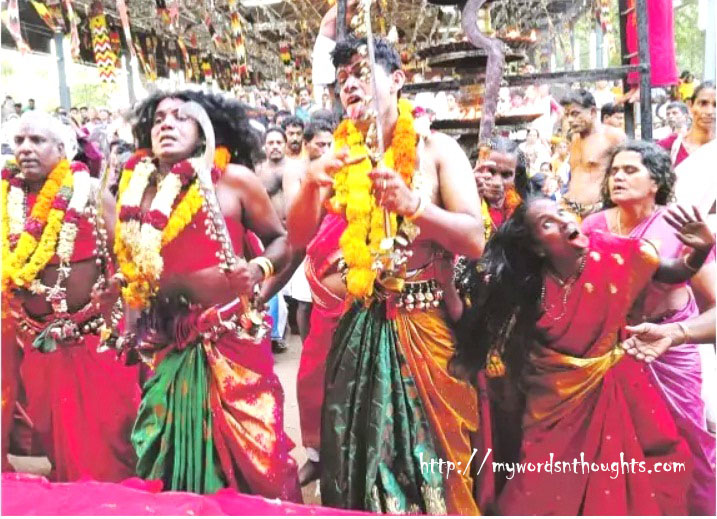
Vadakkedath Madam holds a very significance place in the celebration. Komarams who reach the temple premises earlier will camp in Vadakkedath Madam and premises around. The main Komaran starts off from this Madam, marking the beginning of Aswathy Kavutheendal ceremony. Soon after Kozhikkal Moodal ritual is completed, Komarams reach the courtyard of Vadakkedath Madam and camp there. It’s believed that Bhagavathy is present in the Nilavara of this Tharavad.
Komarams take bath in the early mornings. Soon after witnessing the secret Trichandana Charth Pooja inside the temple, Thampuran along his accompanies reaches Nilapadu Thara of Kizhakke Nada. He grants permission for Aswathy Kavu Theendal, and to mark the event Koyma opens red silk umbrella in the air. Palakkal Devan (currently Devidasan for the past few years) seated at Padinjare Nada (west side of the temple) gets the opportunity to do Kavutheendal first.
Soon after, Komarams camped at Vadakedath Madam of Kizhakke Nada, start off with Pallival (sword) given by Velichapad. Swords will be venerated by velichapad before they are handed over to Komarams one by one. Wearing red silk clothes, tying bells in waist and wearing anklets in ankles, fierce Komarams reach the temple in folk. They start from Kizhakke Nada and reach Vadakke Nada, and wait at Avakasathara for their chance for Kavutheendal. With rigour footsteps and sword in hands they circumvallate the temple. They also make wounds in their heads using swords and shed blood while circumvallating the temple. They beat Chempola Thakid (bronze plates) of the temple using bamboo sticks and throw offerings towards the temple, and circumvallate the temple three times to complete the eve.
They turn calm only before Desa Poojaris (local priests). Then they rest in the places specially reserved for this purpose. It’s locally known as ‘Avakasa Thara’ and the devotees camp in those locations. At Vasurimala Nada of West side of the temple and in the east side, devotees give offerings to the temple carried from different desams. Turmeric, pepper and rice (paddy) and hens are thrown towards the temple as offering.
Following the Aswathy Kavu Theendal ceremony, Komarakootam (clusters of Komarams) reach Nilapadu Thara at Kizhakke Nada, seek blessings of Valiya Thampuran and return. Valiya Thampuran will be seated there, and Komarams touch his feet to seek blessings.
A brief note on the famous Thalapoli festival
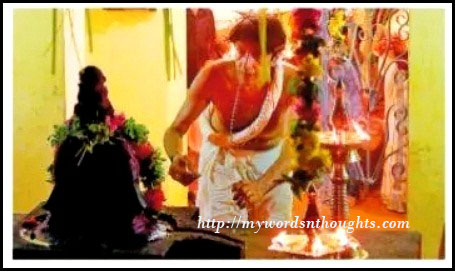
Gurudi Pooja conducted as a part of Thalapoli Celebrations
After Bharani festival, Thalapoli celebrations is done in a grand manner, and the temple still follow old traditions to celebrate the eve. On the auspicious eve of the beginning of Utharayanam, the events begin with bursting 1001 Kadhinas (a thick iron tube filled with gun powder). On the evening of Makara Sankramam day, from the main lamp of Sree Kovil, adikal transfer the fire to the people who are assigned the power to light Kathina. With the fire burst, Thalapoli celebrations kick off. It’s followed by special pooja of Malayarayar – tribal people from southern districts, who fast for 41 days and camp around the temple. They also carry Irumudi Kettu (a bundle of offerings given to the temple), and reach temple along with their families. More than 100 Malayarayar families participate in the special poojas conducted there, and most of them belong to mountain regions. Their poojas are conducted by Desamooppar (local priests), and it lasts hour long accompanied by chanting devotional songs praising goddess. In the Irumudi Kettu, they carry their cultivated items such as paddy, pepper and turmeric and they offer it to goddess before return. They stay for next 24 hours in the temple premises and camp beneath banyan trees and nearby places, and return the next day evening, the day which the first Thalapoli procession is carried out in a grand manner. Till then many traditional poojas are conducted in the temple day and night throughout.
The celebration lasts for 4 long days and nights, and it begins with Sankhakali. It continues till Makara Sankranti day, and the performance is carried out inside the main temple wall and outside. This traditional art form is performed by Chathira Namboodiris, after seeking permission from Valiya Thampuran. Namboodiris of Vaikkath Mana traditionally own the right to perform Sankhakali, and they take fasting and follow a few rituals prior to this performance. This art form is deeply linked to Kerala tradition and culture, and it owns several legends and folk stories. It’s a martial art form, owns a distinct costume and the performers also use traditional weapons like sword and armour.
When temple closes after night pooja (athazha pooja), a ghee lamp will be lighted with 4 wicks and Sankhakali is performed. On the first day, it’s performed inside the temple, on the second day, outside the main temple in front of Valiya Thampuran and on the third day, inside the temple. Neyvilakk (ghee lamp) which is lighted to commence the eve will be retained so as ‘Kedavilakk’ (light that is not blown) till the end of Thalapoli celebrations, when Chathira Namboodiris return. On Thalapoli days, for the processions conducted both in days and nights, Chathira Namboodiris accompany the group carrying sword and armour in their hands.
On the first Thalapoli day, rituals such as Savasini Pooja of Kudumbi community and Aadine Nadathallal (offering goats) are carried out. Women belonging to Kudumbi community from different regions reach the place, gather around the temple in small groups and conduct Savasini pooja by offering rice flakes (aval), malar (a pooja ingredient made using rice), jaggery, banana and coconut in banana leaves to goddess. Almost at the same time, goats will be decorated and starts off as a procession from Thekke Nada (south door) accompanied by traditional music and musicians, and the group reaches Vadakke Nada Panthal (special arrangements done at north side of the temple) to complete Aadine Nadathallal (offering goats) rituals. The events will be completed before 1 am, and Thalapoli events start off in the afternoon.
Day Procession (Pakal Ezhunnallipp) – the major attraction of the festival starts off at 1 pm. It will be done in a grand way using 9 caparisoned elephants. Panchavadyam and Melam accompany the procession, and both these groups are led by some of prominent percussion artists from Kerala. It starts from the main door of the temple at the southern side, and ends at east door (Kizhakke Nada). The group will be welcomed by the Thampuran at a specially decorated Aana Panthal. Similarly the night procession also begins from the temple, in front of Kurumb Bhagavathi. The whole expenses of the first day of Thalapoli are arranged by Onnu Kure Aayiram Yogam, the organization which has deep link with Kodungallur history.
On the third Thalapoli day, for the night procession, members of Edavilang Pathinettarayaalam Kovilakam also accompany the group taking footsteps. This procession is known as Pathinettarayaalam Ezhunnallipp. It starts with Guridi Pooja at Thekke Nada in front of Bhagavati at around 9 pm, and 1000s of people witness this religious ceremony. Pakal Ezhunnallipp is also performed the same day. At Edavilang Pathinettarayaalam Kovilakam, at around 9 pm (almost at the same time of Gurudi Pooja conducted in the temple), special poojas will be conducted by drawing lotus and kalamezhuthu, under a local priest before the procession starts off. After that Ezhunnallipp of Bhagavathi mounted on a single elephant is conducted, and devotees offer Nirapara on either sides of the roads throughout. When the group reaches Unniparambath Padi, the melam is seized for a while and the Kolam of goddess is given Irakki Pooja before the group resumes the journey. It’s believed that this place has the divine presence of goddess. That’s why she descends here and worship is conducted.
Gurudi Pooja is conducted only on the third Thalapoli day, and on the remaining days, Gurudi is conducted in front of Vasoorimala sub-temple. Thalapoli celebrations reach its final stage on the fourth day. Elephant procession is held at day and night and Deeparadhana is also conducted. Irakkki Pooja is conducted during daytime witnessed by hundreds of devotees. Procession starts off at around 1 am accompanied by Panchavadyam. Procession reaches Vadakke Nada, and the Kolam descends down. Irakki Pooja is conducted and through Kizhakkenada, Bhagavathi’s Kolam is taken to Sreekovil (Main temple), followed by Deeparadhana. and fireworks. The temple events end with night Ezhunnallipp and yet another grand fireworks.
As a part of Thalappoli celebrations, on the 5th day, goddess is mounted on elephant and procession is conducted for the custom, Vithezhunnallipp (Procession of seeds), and the event will be witnessed by local people including women and kids.
Image source: Wikipedia, Mathrubhumi e-paper
You can read a few more articles related to temple rituals, offerings, customs and celebrations, mostly associated with temples across across Kerala. Here is the page link. Click on the images in the gallery to read


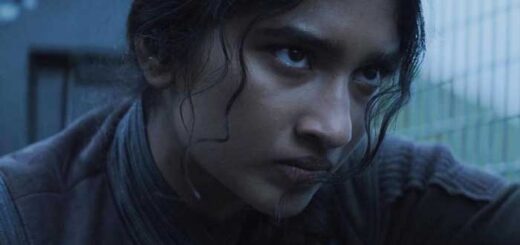
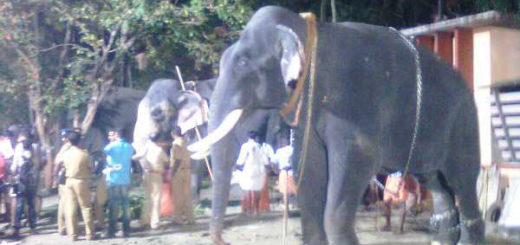









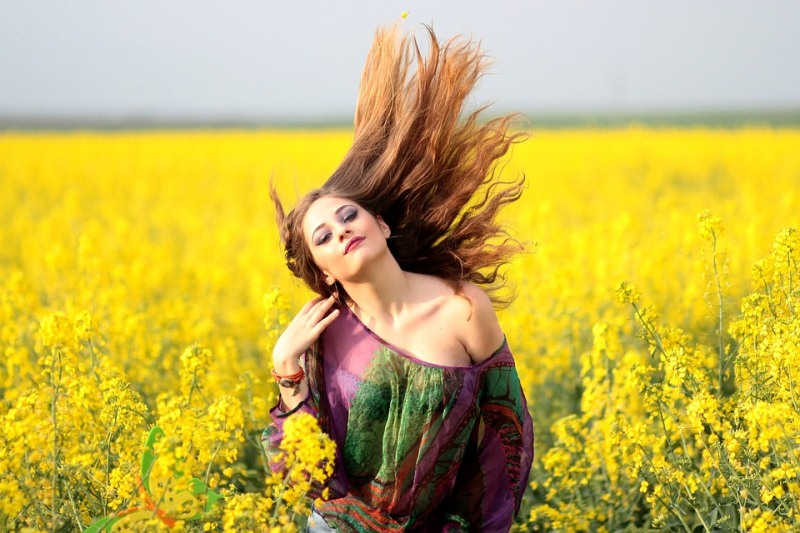
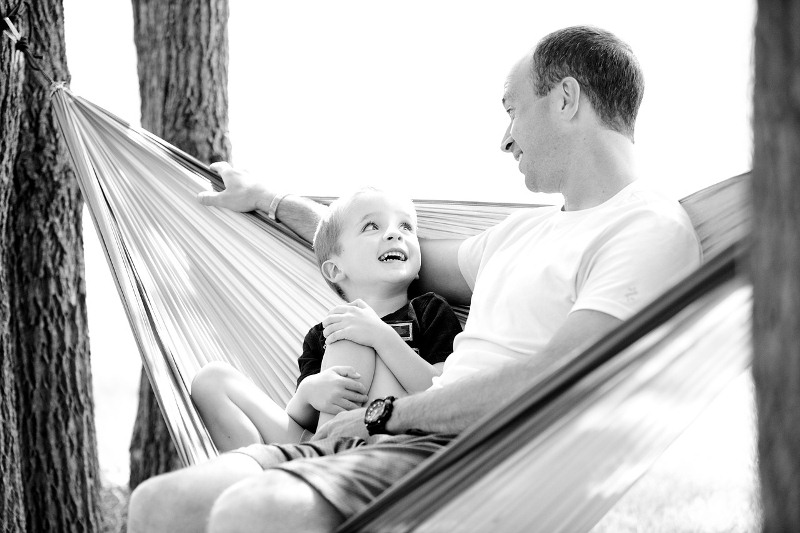
Recent Comments